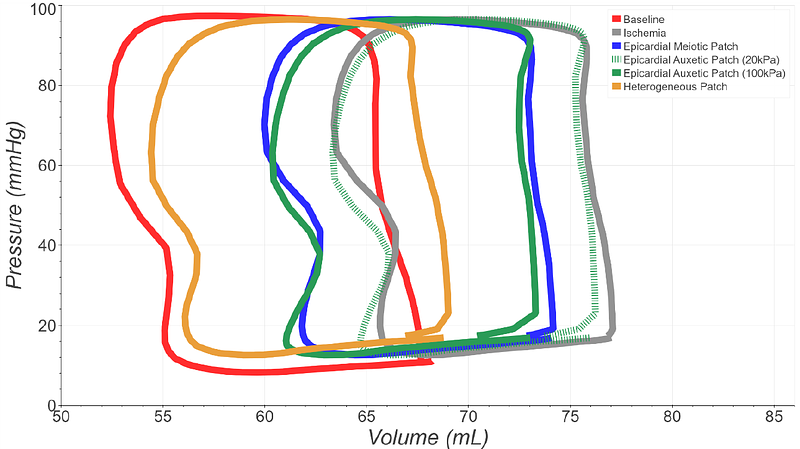Auxetic patch material exhibits systolic thickening and restores pump function in a finite element model of acute myocardial infarction repair

Auxetic patch material exhibits systolic thickening and restores pump function in a finite element model of acute myocardial infarction repair
Borrello, J.; Zheng, Z.; Estrada, A. C.; Costa, K. D.
AbstractPassive mechanical reinforcement of the infarcted heart has been shown to counteract infarct expansion and left ventricular (LV) functional degradation. However, traditional patch plasty of the ischemic region also restricts diastolic filling, reducing cardiac output. These negative side-effects can be minimized with strategic modification of the standard patch, suggesting further functional improvements could be possible through a broader exploration of patch materials. This study examines the potential advantages of a patch graft with auxetic properties, having a negative Poisson\'s ratio (v < 0). For preliminary evaluation, an established finite element model of LV biomechanics pre- and post-acute infarction, originally developed for modeling patch plasty with non-auxetic, or meiotic, materials, was modified to simulate epicardial implantation of auxetic patch materials. A homogeneous auxetic patch graft (v = -0.2) exhibited radial thickening during systole, driven by tension on the patch from the neighboring contracting myocardium; but the patch thickness expanded away from the LV cavity and therefore did not improve ventricular mechanics compared to a standard meiotic patch graft (v = 0.4). Alternatively, a heterogeneous auxetic patch design with an outer reinforcement layer caused inwardly-directed systolic thickening that restored the LV pressure-volume relationship toward baseline function, without adversely affecting fiber stress in the border zone or remote myocardium compared to the meiotic patch. This computational modeling study demonstrates the potential to harness auxetic mechanical properties for improving LV pump function in the setting of acute myocardial infarction, motivating further experimental validation of auxetic metamaterial patch devices for surgical repair of injured myocardium.